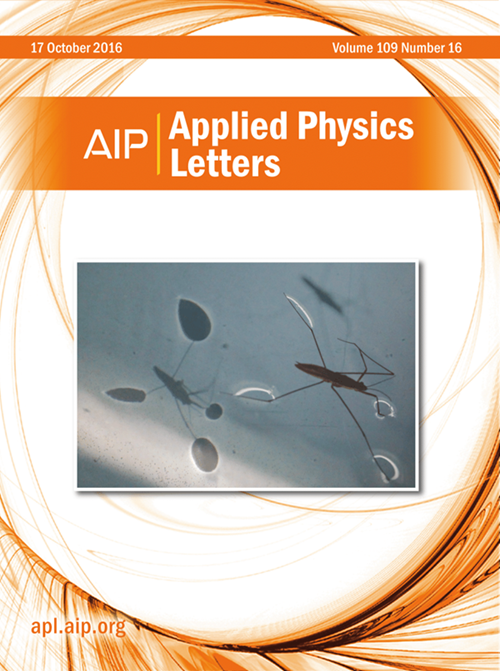Strain-induced topological transitions in epitaxial films of cadmium arsenide
IF 3.6
2区 物理与天体物理
Q2 PHYSICS, APPLIED
引用次数: 0
Abstract
Strain in epitaxial thin films can have a profound influence on their electronic bands. Here, we investigate the influence of epitaxial strains on the electronic states of (001)-oriented cadmium arsenide (Cd3As2) thin films, which are two-dimensional topological insulators. Cd3As2 films were grown coherently on Al1−xInxSb buffer layers with varying degrees of lattice mismatch to Cd3As2, producing in-plane stresses that ranged from compressive to tensile. Using magneto-transport measurements of the Landau levels of the lowest subbands, we show that films under compression remain in the two-dimensional topological insulator state, while a sufficiently large tensile stress induces a transition to a topologically trivial phase. These results qualitatively agree with expectations from theoretical models for these films. At the topological transition, the gap avoids completely closing, and we discuss possible origins.砷化镉外延薄膜中应变诱导的拓扑转变
外延薄膜中的应变对其电子能带有深远的影响。在这里,我们研究了外延应变对(001)取向的二维拓扑绝缘体镉砷(Cd3As2)薄膜电子态的影响。Cd3As2薄膜在Al1−xInxSb缓冲层上生长,这些缓冲层与Cd3As2的晶格失配程度不同,产生了从压缩到拉伸的平面内应力。利用最低子带朗道能级的磁输运测量,我们发现薄膜在压缩下保持在二维拓扑绝缘体状态,而足够大的拉伸应力诱导过渡到拓扑平凡相。这些结果在质量上与这些电影的理论模型的期望一致。在拓扑转换时,间隙避免完全闭合,并讨论了可能的起源。
本文章由计算机程序翻译,如有差异,请以英文原文为准。
求助全文
约1分钟内获得全文
求助全文
来源期刊

Applied Physics Letters
物理-物理:应用
CiteScore
6.40
自引率
10.00%
发文量
1821
审稿时长
1.6 months
期刊介绍:
Applied Physics Letters (APL) features concise, up-to-date reports on significant new findings in applied physics. Emphasizing rapid dissemination of key data and new physical insights, APL offers prompt publication of new experimental and theoretical papers reporting applications of physics phenomena to all branches of science, engineering, and modern technology.
In addition to regular articles, the journal also publishes invited Fast Track, Perspectives, and in-depth Editorials which report on cutting-edge areas in applied physics.
APL Perspectives are forward-looking invited letters which highlight recent developments or discoveries. Emphasis is placed on very recent developments, potentially disruptive technologies, open questions and possible solutions. They also include a mini-roadmap detailing where the community should direct efforts in order for the phenomena to be viable for application and the challenges associated with meeting that performance threshold. Perspectives are characterized by personal viewpoints and opinions of recognized experts in the field.
Fast Track articles are invited original research articles that report results that are particularly novel and important or provide a significant advancement in an emerging field. Because of the urgency and scientific importance of the work, the peer review process is accelerated. If, during the review process, it becomes apparent that the paper does not meet the Fast Track criterion, it is returned to a normal track.
 求助内容:
求助内容: 应助结果提醒方式:
应助结果提醒方式:


